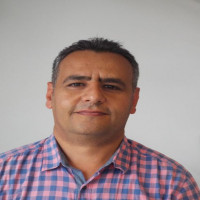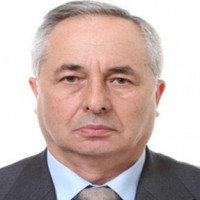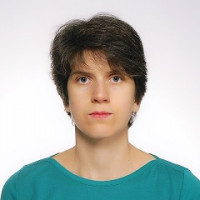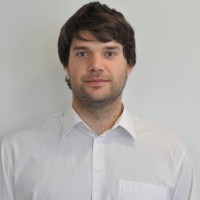Research Articles
Issue Editorial Board

Dr. Patti Clark is an Adjunct Faculty member and former Associate Professor with the College of Aviation, Department of Graduate Studies at Embry-Riddle Aeronautical University – Worldwide. To date, Dr. Clark has published numerous articles related to aviation sustainability, aircraft maintenance workforce and safety management issues. She also served on several national level aviation-related committees and panels. Airport management, sustainability and metrics in the aviation industry are her primary research interests.
Dr. Clark is a certified Project Management Professional (PMP), a Certified Member (CM) of the AAAE organization and an FAA licensed Airframe and Powerplant (A&P) Technician.
Prof Raj Das leads the ‘Simulation and Modelling’ team in the Department of Aerospace Engineering at RMIT University in Australia. He has also an adjunct academic in the University of Auckland (New Zealand) and the University of Quebec (Canada). He is a principal investigator of the ‘Sir Lawrence Wackett Aerospace Research Centre’ of RMIT University. He is the Chair of the ‘National Committee on Applied Mechanics’ of Engineers Australia, Vice President of the ‘International Congress on Fracture’ and past President of the ‘International Committee on the Mechanical Behaviour of Materials’.
Prof Das has published more than 350 papers in international journals and conferences. Prof Das has a PhD from Monash University, Australia in Structural Optimisation and Failure Analysis. Prof Das has previously worked in the University of Auckland, the Commonwealth Scientific and Industrial Research Organisation (CSIRO), and the University of Manchester.
Prof Das has research capabilities in advanced materials, such as metamaterials, auxetic materials, architected materials, composite materials, topology and shape optimisation for materials and structural designs, computational modelling, fracture mechanics, dynamic fracture, damage tolerance based optimisation, numerical modelling and multi-scale analysis using finite element and mesh-less methods, impact behaviour and failure analysis of metals, ceramic and composite materials. Prof Das has been extensively promoting applied mechanics, computational mechanics and fracture mechanics research within the Australasian region. He was the chair of four major scientific conferences recently held in Australia and New Zealand. He has served on the scientific committees of more than 100 international conferences. Prof Das is on the editorial board and review panel of several journals and funding agencies.
Prof Das has been granted several national and international awards and fellowships, including the ‘Jim & Hazel D. Lord Emerging Faculty Fellowship’, ‘Research Excellence Award’, and ‘AUEA Emerging Researcher Award’ by the University of Auckland. He has received the ‘CONICYT award’ from the Government of Chile, ‘Certificate of Merit Award’ from the International Association of Engineers, Hong Kong, ‘UQAC Visiting Fellowship’ from the University of Quebec, Canada, and ‘Visiting Researcher Fellowship’ from the University of Cape Town, South Africa.

Mohammad Mehdi Rashidi is a professor of Mechanical Engineering, He works at University of Electronic Science and Technology of China. 2018, 2019 and 2020 highly cited researcher by Thomson Reuters (Clarivate). He has published over 345 journal papers and 55 conference papers. He is the editor of ten International Indexed Journals:
Engineering Section Editor of Heliyon (IF= 2.45, Q1), Co-Editor in Chief for Alexandria Engineering Journal, Editorial (IF= 3.732, Q1), Advisory Board of International Journal of Numerical Methods for Heat & Fluid Flow (IF= 2.45), Editorial Board of PLOS ONE (IF= 2.766), Editorial Board Member of Tribology in Industry (IF= 1.32, Sep 2017), Honorary Editorial Advisory Board of Journal of Thermal Engineering (Sep 2014), Editorial Board Member of Maejo International Journal of Science and Technology (IF= 0.312, Sep 2015), Deputy Section Editor of the Journal of Engineering (Web of Science), (Nov 2017 ).
His research details are available on:
• LinkedIn, https://www.linkedin.com/in/mohammad-mehdi-rashidi-09167831/
• Google Scholar, https://scholar.google.co.uk/citations?user=IL744coAAAAJ&hl=en
• ORCID ID: 0000-0002-6309-8688, https://orcid.org/0000-0002-6309-8688
• Mendeley, https://www.mendeley.com/profiles/mohammad-mehdi-rashidi/
• KUDOS, https://growkudos.com/hub/63551/publications
• Researcher ID: P-2692-2014, http://www.researcherid.com/rid/P-2692-2014
• Scopus Author ID: 57189276752
https://www.scopus.com/authid/detail.uri?authorId=57189276752
• Publons ID: 336837, https://publons.com/author/336837/mohammad-mehdi-rashidi#profile


Jelena Svorcan is currently an Associate Professor at the Department of Aerospace Engineering of the University of Belgrade, Faculty of Mechanical Engineering in Belgrade, Serbia where she had also previously obtained her PhD. Throughout a decade-long scientific career, her research has mainly been focused on computational aerodynamics, rotating lifting surfaces, wind energy, turbulence, efficiency improvement, numerical simulations, aircraft design and optimization. So far, Svorcan has participated in several national research projects including various collaborations with the partners from the industry. She has authored or co-authored over 70 scientific publications and technical solutions. Svorcan also continuously performs reviews for international scientific journals. She has prepared and given lectures in 10 different subjects at all three levels of study (BSc, MSc, PhD). Svorcan continuously works with students and younger colleagues (researchers), and so far has guided and taken part in several MSc theses committees. She is also currently mentoring three PhD students. Svorcan speaks English fluently.

Dr. David Sziroczák, PhD, MRAeS, CEng is a researcher at the Hungarian national Defense Innovation Research Institute. He is currently also delivering lectures at the Budapest University of Technology and Economics, Faculty of Transportation Engineering and Vehicle Engineering, Department of Aeronautics and Naval Architecture in the field of aircraft design. His key research topic is the aircraft design process and automation, including optimization and other advanced design processes. The research directions include computer assisted automated design, hypersonic vehicles, UAV and AAM aircraft design and operational aspects, including the applicability of new technologies for defence use. He is actively involved in establishing and leading national and international research projects.

Nadir Yilmaz is a professor and the department chair of Mechanical Engineering at Howard University, as well as, a licensed professional engineer (P.E.) and consultant. He received B.S., M.S., and Ph.D. degrees in Mechanical Engineering from Istanbul Technical University, Bradley University and New Mexico State University, respectively. He is a Fellow of American Association for the Advancement of Science (AAAS), American Society for Engineering Education (ASEE), American Society of Mechanical Engineers (ASME), National Society of Professional Engineers (NSPE) and Society of Automotive Engineers (SAE International). He has been a noted author of many publications in the fields of combustion, CFD, rocket propulsion and automotive engineering. He was a NASA Academic Mission Services (NAMS) Faculty Researcher, and a U.S. Department of Energy Visiting Faculty at Los Alamos National Laboratory and Sandia National Laboratories. He has educated and mentored many underrepresented minority and female students via various STEM programs including the NSF-funded AMP (Alliance for Minority Participation) program.
Dr. Yilmaz serves as the Editor-In-Chief for the SAE International Journal of Fuels and Lubricants and as a member of the editorial board of numerous international journals. In addition, he serves on SAE Foundation Board of Trustees, NSPE Education Foundation Board of Trustees, New Mexico AMP Advisory Board and the Board of Directors of Society of Automotive Engineers of Turkey. Dr. Yilmaz has also served as the Past Chair of SAE Education Board, NSPE Higher Education Executive Board, ASEE Aerospace Division, SAE Washington DC Section and ASME New Mexico Section. In a Governor-appointed position, Dr. Yilmaz previously served on the New Mexico State Board of Licensure for Professional Engineers and Professional Surveyors.
Aim & Scope
The International Journal of Aviation Science and Technology is an interdisciplinary journal that focuses mainly on the theme of aviation and sustainability, addressing a broad audience. The aim of this journal is to bring together compilation, research, discussion and criticism studies that link sustainability and aviation issues and to create national knowledge.
This journal accepts publications in aviation science, aircraft engineering, mechanical engineering, energy engineering, electrical-electronic engineering, material engineering, environmental engineering, industrial engineering, architecture, and many other applied sciences. In addition, other studies addressing issues related to aviation will be welcomed.
Author Guidelines
ARTICLE PREPARATION
Please follow the instruction for authors' page and use this Journal template:
Instruction for authors in journal web page
https://ijast.org/instructions-to-authors/
Article template
https://ijast.org/wp-content/uploads/2022/03/IJAST-Article-Template-for-Authors.zip
Please use Copyright agreement: (Download and then upload this file)
https://ijast.org/wp-content/uploads/2023/03/IJAST-Copyright-Agreement-23.docx
Article Types
• Research articles
• Review articles.
This article type should be selected when uploading. Research articles expected not to exceed 5000 to 7000 words limits. Full paper articles are original, high quality, scientific findings that reveal a unstudied and unpublished studies.
For review articles, not to exceed 7000 to 9000 words limit at most. The review article should reveal the point reached on the subject or bring together the studies done so far around the relevant subject to provide clarity. There is a strict policy to evaluate the review articles.
Article Structure
Full paper articles should include below sections.
• Title
• Authors
• Abstract
• Keywords
• Introduction
• Method
• Results and Discussion
• Conclusion
• Abbreviations
• Credit author statement
• References.
Styles are used effectively in article writing and use the styles transferred with the copies you will download from the journal pages. You can look the styles section at the end of the document for how to use styles.
Title
Article title should be determined in a way to express the subject and not exceed 10 words. Book Title style is used for the title.
Titles should be simple and concise. The first word should be capitalized; then only special, trade names and chemical symbols should be capitalized. Non-standard abbreviations should not be used. Please see the “Physical Review Style and Notation Guide” section how to use the styles in MS Word template.
Authors
Authors section should be placed under the title. The style of the authors section should be Authors. The first author should be written first, followed by the second author and other authors. Author information ijast.aviation@gmail.com dergipark.org.tr/en/pub/ijast International Journal of Aviation Science and Technology – IJAST 5 should follow; In the first place, the institution of the author, the e-mail address and the ORCID ID information should be placed. It should be written in Affiliations style. Please see the “Physical Review Style and Notation Guide” section how to use the styles in MS Word template. However, we’re expecting to be provided this information after the double-peer review process.Abstract
Abstract cannot exceed 250 words. Abstract style is used for the abstract section. Abstract must reflect all the important aspects of the manuscript. We are accepting only one paragraph of manuscript. But we may advise you to prepare the manuscript abstract by answering the following questions. What is my purpose in this article? Which method, or approach or design did I used? Which findings have I revealed? What is this article’s originality? Please use Abstract Style in style gallery. Please see the “Physical Review Style and Notation Guide” section how to use the styles in MS Word template..
Keywords
Keywords should be given as words derived from the content of the article and the content of the abstract. Keywords should be written in Keywords style. Please see the “Physical Review Style and Notation Guide” section how to use the styles in MS Word template.References
IJAST has recently change its citation system to the Harvard Cite Them Right. Please use this citation and referencing system to prepare your references section. Please follow below link to see the examples how to use referencing while building your manuscript.
https://ijast.org/wp-content/uploads/templates/ReferencingGuideline.pdf
-----IMRAD Approach----
In order to build a scientific article to achieve its purpose, the author should express the problem, approach to the problem and solutions in a clear and understandable language. If the article is not expressed clearly, readers will not be able to draw sufficient conclusions from the article and scientific writing will not reach its purpose. The open problem mentioned should make a new contribution to the literature. However, he should have conveyed the words that would explain his command of the literature in a way to convey his domination of similar articles and problems previously published on the subject.
Scientific writing; should be expressed in effective, clear and meaningful words. Therefore, the scientist must be cultured to be successful in this endeavor. We must all admit that “English has almost become the universal language of science” (E. Garfield, The Scientist, 7 September 1987, p.9). All scientists should learn to use English with precision. English does not need to be written in a complex and requiring native-level knowledge to be understood. In a scientific article it is said: “The best English is English that gives meaning with the least number of short words” (an authoritative expression printed in the Directives for Authors section of the Journal of Bacteriology).
We strongly advise to follow IMRaD approach to the authors as seen in Fig. 1.The IMRaD logic can be defined in the questionnaire: Which problem has been studied? Answer: Introduction. How was the problem studied? Answer: Methods. What was found? Answer: Results. What does these mean? Answer: Discussion. The IMRaD format, which has been advancing slowly since the late 19th century, found an almost universal use in research journals. Today, this area of usage helps the author in editing and writing the text; It seems that it provides an easy roadmap for editors, reviewers and ultimately readers who read and watch the article.
Credit Author statement
Author information should not be included in the first page.
Ethical Principles and Publication Policy
https://ijast.org/ethics-policy/
Please follow the above link for updated information from the site
Price Policy
All articles published in IJAST Journal are open access and freely available online, immediately upon publication. Authors may read about publication charges policies by the following link.
https://ijast.org/publication-charge-policy/
Please find the article preperation and structure guides in author guidelines section.
Please do not hasitate to contact with us in here.





